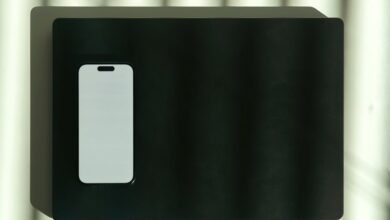Ferrari Reveals Its Electric Powerhouse, and What Could Finally Be Real EV Sound

Ferrari Reveals Its Electric Powerhouse, and What Could Finally Be Real EV Sound
Estimated Reading Time: 5-minute read
- Ferrari is entering the electric vehicle market with a high-performance supercar boasting over 1,000 hp.
- A primary focus for this new EV is to solve the long-standing “EV sonic problem” by developing an authentic and emotionally engaging electric sound.
- Instead of artificial engine noises, Ferrari aims to amplify and sculpt the inherent mechanical and electrical harmonics of the powertrain.
- This innovative approach to sound engineering is intended to provide critical sensory feedback to the driver, maintaining the emotional thrill synonymous with the Ferrari brand.
- Ferrari’s work could set a new industry standard for EV driver engagement and contribute to pedestrian safety through unique, recognizable sound profiles.
- The Prancing Horse Gallops into the Electric Age
- Re-engineering Emotion: The Quest for Authentic EV Sound
- Beyond the Roar: Practical Implications and the Future of Driving
- Conclusion
- Frequently Asked Questions
For decades, the name Ferrari has been synonymous with unparalleled speed, breathtaking design, and, perhaps most importantly, an iconic, visceral engine roar. The very essence of the Prancing Horse has been deeply intertwined with the symphony of its V8s and V12s. Now, as the automotive world pivots towards electrification, a crucial question looms: can an electric Ferrari truly embody the spirit of its petrol-powered ancestors? Ferrari’s latest announcement suggests not only a resounding “yes” but also that they might just have discovered the key to unlocking true emotional engagement in the electric era.
The transition to electric vehicles (EVs) presents luxury performance brands with a unique set of challenges. Beyond simply matching performance metrics, there’s the monumental task of replicating the sensory experience that defines a supercar. The absence of engine noise has been a significant hurdle, leaving many enthusiasts longing for the raw, unfiltered feedback that a traditional internal combustion engine provides. Ferrari, ever the pioneer, is not merely chasing numbers; it’s re-engineering the very soul of driving.
The Prancing Horse Gallops into the Electric Age
Ferrari’s venture into the fully electric domain is set to redefine what an EV can be. While specific model names and full technical details are still under wraps, the hints dropped by the Maranello giant paint a picture of blistering performance. This isn’t just another fast electric car; it’s a Ferrari, meticulously engineered to exceed expectations in every conceivable metric. We’re talking about a vehicle designed from the ground up to push the boundaries of electric propulsion, blending cutting-edge battery technology with lightweight materials and advanced aerodynamics.
The sheer power on offer is staggering. Preliminary figures suggest a new benchmark for hyper-EVs, ensuring that the Ferrari badge remains synonymous with apex performance. But as the legendary carmaker understands, true excellence transcends mere statistics. The drive, the feel, and crucially, the sound must all harmonise to deliver an authentic Ferrari experience. This deep understanding of holistic performance is where Ferrari truly shines.
“More than 1,000 hp, 192 mph, and regen braking with more than half the force of an emergency stop aren’t enough for the Italian carmaker—it might just have solved the EV sonic problem once and for all.”
This statement encapsulates Ferrari’s ambition. It acknowledges that raw power and mind-bending acceleration, while impressive, are only part of the equation. The focus on regenerative braking, delivering over half the force of an emergency stop, highlights the sophisticated control and driver engagement built into the car’s core dynamics. But the real game-changer lies in their audacious claim to have solved the EV sonic problem. This isn’t just about adding noise; it’s about crafting an auditory signature that is both authentic to the electric powertrain and genuinely thrilling, maintaining the emotional connection drivers expect from a Ferrari.
Re-engineering Emotion: The Quest for Authentic EV Sound
The “EV sonic problem” is a complex challenge. Early electric cars were often criticized for their sterile, almost silent operation, which, while beneficial for urban environments, stripped away a vital layer of feedback and excitement for the driver. Synthetic sounds have been employed, but often fall flat, lacking the organic richness and responsiveness of an internal combustion engine. Ferrari’s approach goes far beyond simply piping artificial engine noises into the cabin or externally.
Instead, Ferrari is reportedly delving into the physics of electric propulsion itself. This involves meticulously amplifying and sculpting the inherent mechanical and electrical harmonics generated by the electric motors, inverters, and gears. Imagine a sound that isn’t superimposed but is rather an authentic, albeit artfully enhanced, representation of the powerful forces at play within the electric powertrain. This could involve innovative resonant chambers, advanced transducer technology, and sophisticated algorithms that dynamically adjust the sound based on acceleration, speed, and driver input, creating an immersive and responsive auditory landscape.
The goal is not to mimic a V12 but to create a new, distinct “electric Ferrari sound” that evokes the same level of passion and exhilaration. This sound would be uniquely tuned to the car’s performance, providing critical sensory feedback that traditional EVs often lack. It’s about translating the immense torque and instantaneous power delivery into an audible sensation, completing the feedback loop between car and driver, ensuring that the emotional thrill remains at the heart of the driving experience.
Beyond the Roar: Practical Implications and the Future of Driving
Ferrari’s groundbreaking work in EV sound engineering has implications far beyond the realm of luxury supercars. It sets a new precedent for how all electric vehicles might engage drivers and even contribute to pedestrian safety. The challenge of creating an engaging, yet authentic, sonic signature for EVs is one that the entire automotive industry grapples with, and Ferrari’s solution could offer a blueprint.
For instance, consider how high-end musical instruments are designed. A master luthier doesn’t simply add sound to a violin; they craft the wood, the curves, and the tensions to resonate in a specific, rich, and harmonious way. Ferrari appears to be applying a similar philosophy to their EV sound: not adding artificial noise, but engineering the vehicle itself to produce an intrinsically captivating and authentic sonic experience from its electric components. This approach moves beyond simple synthesis to a more organic, physics-based generation of sound that truly reflects the vehicle’s dynamic state.
Here are three actionable steps for enthusiasts, designers, and consumers navigating the evolving EV landscape:
- Embrace the Evolution of Performance Metrics: Don’t limit your evaluation of EVs to horsepower and 0-60 times. Pay attention to how manufacturers are innovating in areas like sensory feedback, driver engagement, and the quality of the “drive experience.” A truly great EV will offer a holistic performance package.
- Prioritize Auditory Engagement in EV Design: For automotive designers and engineers, Ferrari’s initiative highlights the critical role of sound. Move beyond basic Acoustic Vehicle Alerting Systems (AVAS) and explore how to create an authentic, responsive sonic signature that enhances driver connection and brand identity, rather than just meeting regulatory requirements.
- Seek Immersive Test Drive Experiences: When considering an EV, don’t just look at the spec sheet. Actively listen to the car, feel its responses, and assess how the overall sensory experience – including sound – contributes to your perception of performance and pleasure. Engage with the vehicle on an emotional, not just a technical, level.
The impact of this innovation extends to safety as well. A unique, recognizable, and pleasing EV sound profile can significantly enhance pedestrian awareness, reducing accident risks in busy urban environments without resorting to irritating or generic alerts. Ferrari’s pursuit of an authentic, engineered sound could therefore serve multiple purposes, blending performance, emotion, and practicality seamlessly.
Conclusion
Ferrari’s venture into the electric future represents far more than just another high-performance EV; it signifies a profound reimagining of the driving experience itself. By refusing to compromise on the emotional connection that defines their brand, and by potentially cracking the code on authentic EV sound, Maranello is not just building a car – they’re sculpting the future of automotive passion. Their ability to fuse over 1,000 horsepower with a captivating, organic auditory experience proves that the thrill of a Ferrari can transcend the fuel source.
The legacy of the roaring engine may evolve, but the heart-pounding excitement and engineering brilliance will undoubtedly continue to define the Prancing Horse, ensuring that even in the electric age, a Ferrari remains unequivocally a Ferrari.
Frequently Asked Questions
What is Ferrari’s main goal with its new electric supercar?
Ferrari’s main goal is not just to match or exceed performance metrics but to fully embody the spirit of its petrol-powered ancestors in an electric format. This includes replicating the sensory experience, especially developing an authentic and emotionally engaging sound that defines a Ferrari supercar, rather than simply chasing numbers.
How is Ferrari addressing the “EV sonic problem”?
Ferrari is reportedly delving into the physics of electric propulsion itself, meticulously amplifying and sculpting the inherent mechanical and electrical harmonics generated by the electric motors, inverters, and gears. The aim is to create a new, distinct “electric Ferrari sound” that is authentic to the powertrain and provides critical sensory feedback, rather than relying on artificial engine noises.
What are the broader implications of Ferrari’s EV sound engineering?
Ferrari’s groundbreaking work sets a new precedent for how all electric vehicles might engage drivers and contribute to pedestrian safety. By creating an engaging, authentic, and recognizable EV sound profile, it can enhance driver connection, reinforce brand identity, and significantly improve pedestrian awareness, blending performance, emotion, and practicality seamlessly across the industry.
Will an electric Ferrari still feel like a traditional Ferrari?
Ferrari is meticulously engineering its electric supercar to ensure it exceeds expectations in every metric, not just power and acceleration. The goal is to harmonize the drive, the feel, and crucially, the sound to deliver an authentic Ferrari experience, translating immense torque and instantaneous power into a complete sensory feedback loop that maintains the emotional thrill and legacy of the Prancing Horse.





